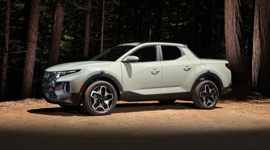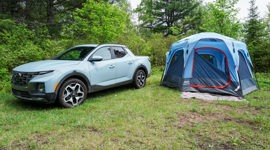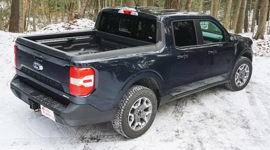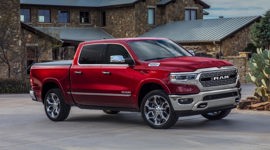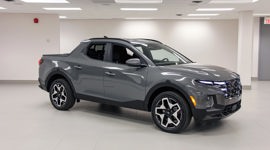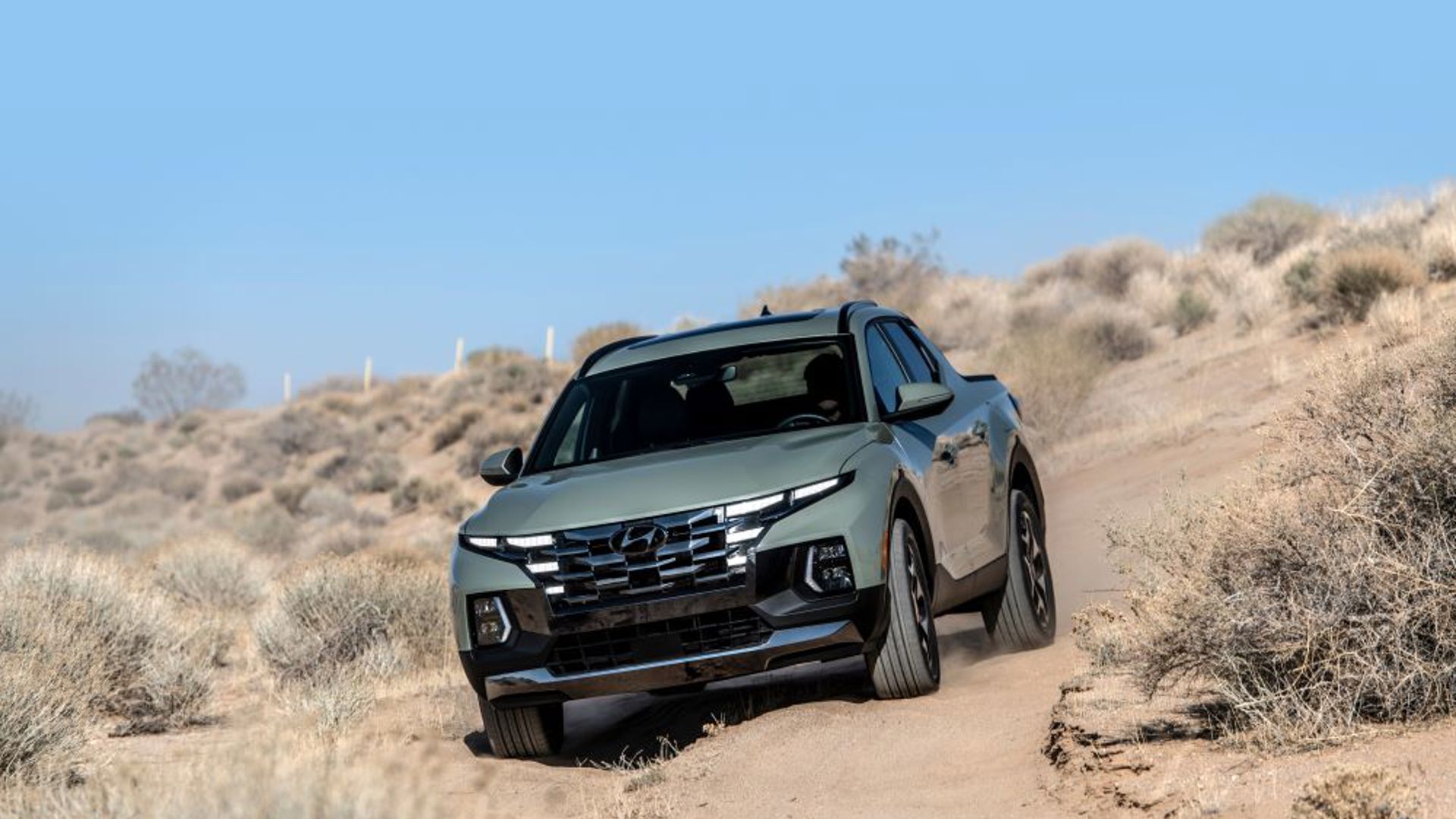Any time an all-new model hits the market, it gets the lion’s share of the press. The 2022 Hyundai Santa Cruz has been voted as the Best Compact/Midsize Truck in the 2022 AutoTrader Awards, and it’s getting a lot of attention as the automaker’s first pickup truck sold here, but it takes more than just a high profile to win votes from our jury of more than 20 automotive experts from all across the country. The Santa Cruz impressed our judges over a wide range of attributes, including its performance, practicality, safety, quality, and value.
The Santa Cruz defeated every single small truck available on the market, including the Ford Maverick, Honda Ridgeline, Jeep Gladiator, and Toyota Tacoma, which were all finalists. That’s a very diverse lineup, which made this an extremely tough category to judge. The Santa Cruz, Maverick, and Ridgeline are unibody vehicles, and their all-wheel drive systems – optional on Maverick – primarily powers the front wheels. The Tacoma and Gladiator are more traditional body-on-frame trucks with four-wheel drive.
Pretty much their only commonality is that they all have seats and a bed. That meant we had to look through the eyes of each truck’s audience, rather than across-the-board as buyers might in the full-size segment, where features and capability are more evenly matched. For example, the Santa Cruz can’t rock-crawl up the side of a mountain as the Gladiator and Tacoma potentially can. Our question then becomes: How well does the Santa Cruz satisfy drivers who want its level of ability, versus how the Gladiator suits its more hard-core adventure-seekers? That’s the type of criteria we used to determine our champion.
The five-passenger Santa Cruz is based on the all-new Tucson SUV. Basically, it’s a Tucson with a bed in the back, made of composite material so you don’t need a bed liner. It includes a standard sliding hard tonneau cover that lets you lock items in the bed, and as with the Ridgeline, there’s a hidden trunk under the bed floor, with a drain plug for washing it out or using it as a cooler.
None of the competitors have both a standard trunk and tonneau, and we feel it’s a combination Santa Cruz shoppers will be glad to see on their trucks. The Maverick has a “Flex Bed” and Ford encourages owners to make do-it-yourself carriers and dividers with lumber and power tools, along with buying dealer accessories. We think this tiny-truck segment is more about ready-to-go right out of the box.
In Canada, the Santa Cruz gets a turbocharged 2.5L four-cylinder making 281 horsepower and 311 lb-ft of torque, with an eight-speed automatic dual-clutch transmission and all-wheel drive. It comes in Preferred trim at $38,499, Preferred Trend at $41,399, and Ultimate at $44,799, all before a non-negotiable delivery fee of $1,825.
When our editor-in-chief Jodi Lai reviewed the Santa Cruz, she said it had “more than enough power,” and gets to highway speed and passes “with no drama at all.” It’s rated by Natural Resources Canada (NRCan) at 10.6 L/100 km in combined driving. Unsurprisingly, that’s better than its larger and heavier competitors here; the Ridgeline’s rated at 11.5, the gasoline (non-diesel) Gladiator as much as 12.6, and the Tacoma as high as 12.9. That said, none can touch the Maverick’s standard powertrain, a gas-electric hybrid system that’s rated at 5.9 L/100 km, which is very impressive.
The Santa Cruz is also a great vehicle to pilot. Lai says it “drives and handles better than most typical crossovers,” that it’s “nimble and responsive,” and “it’s amazingly easy to manoeuvre around the city.” It also tackles medium-tough off-road better than expected. It feels like a smooth-driving compact SUV because it’s based on one, but as mentioned above, we took that into consideration. Tacoma drivers expect a firmer suspension; Gladiator owners know extreme off-road capability comes with an on-road-ride price. But we felt the Santa Cruz’s audience will lean heavily toward city dwellers who visit the great outdoors for the weekend, and it works very well at both ends of that scale.
The 2022 Hyundai Santa Cruz comes well-equipped with a decent number of features for the price. All trims include heated seats and steering wheel, blind-spot monitoring, and emergency front braking; upper trims add a 10.25-inch touchscreen, ventilated seats, sunroof, and navigation. Once again, we realize that some truck owners want bare-bones vehicles, especially if they plan for rugged adventures. But we felt the Santa Cruz once again hits the sweet spot for the audience it seeks.
We know this segment is controversial because many people don’t consider the Santa Cruz – or the Maverick, or even the Ridgeline – a “real truck,” because of its size and SUV underpinnings. Our take is that whether a compact to a one-ton dually, a real truck is the one that fits its buyer’s needs. We feel the Hyundai Santa Cruz will do that very well, and that’s why it’s AutoTrader’s Best Compact/Midsize Truck for 2022.
